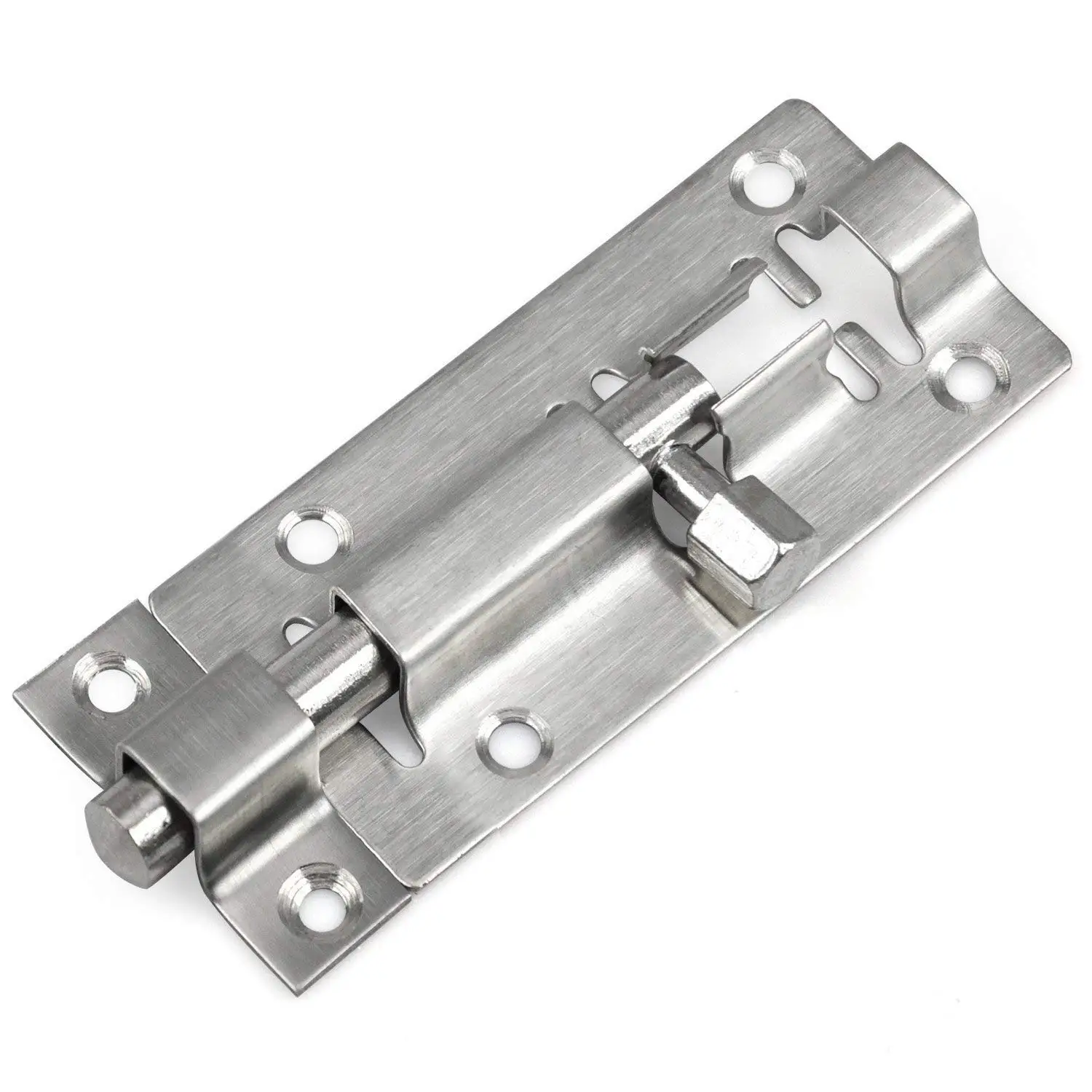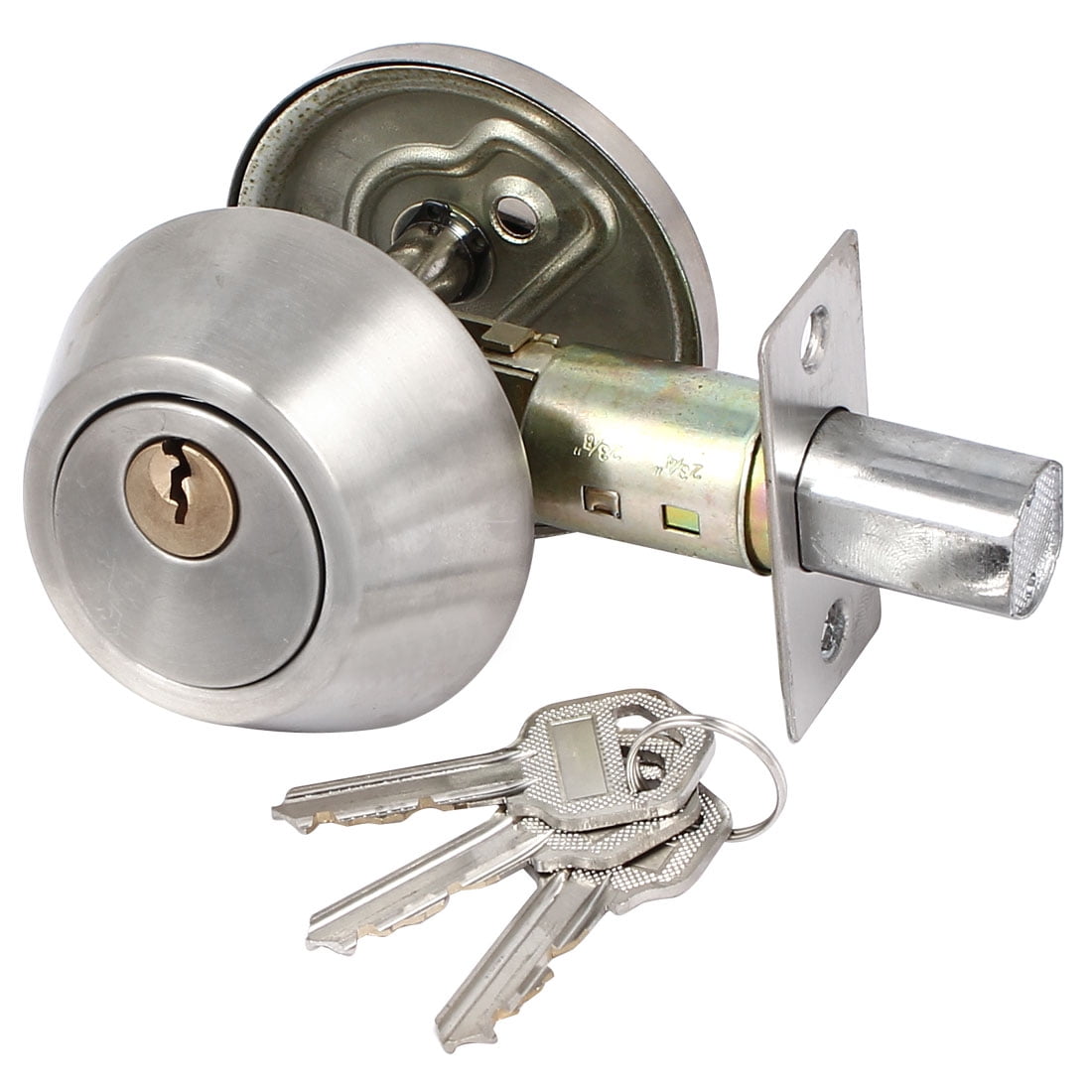Bathroom Door Bolt Lock

Bathroom door bolt locks are essential security features designed to provide privacy and safety within the bathroom. They are commonly found in residential and commercial settings, offering a simple yet effective means of locking the door from the inside.
Types of Bathroom Door Bolt Locks
The type of bathroom door bolt lock you choose depends on your specific needs and preferences. There are several common types, each with unique features and functionalities.
- Standard Bolt Lock: This is the most basic type, typically featuring a simple latch that slides into a strike plate on the door frame. It offers basic privacy and is easy to install.
- Deadbolt Lock: A deadbolt lock provides enhanced security by extending a solid metal bolt into the strike plate. This type is more resistant to forced entry and is often used in conjunction with a standard bolt lock.
- Privacy Bolt Lock: This type is designed for privacy, often featuring a “privacy” or “occupied” indicator on the outside of the door. It can be easily unlocked from the inside, but requires a key or a specific mechanism to unlock from the outside.
- Lever Handle Lock: A lever handle lock combines the functionality of a standard bolt lock with a lever handle for easy operation. It is often preferred for its accessibility and ease of use.
- Electronic Bolt Lock: This advanced type uses electronic mechanisms for locking and unlocking. It may feature keypads, remote controls, or even smartphone integration, providing greater convenience and security.
Functions of Bathroom Door Bolt Locks
Bathroom door bolt locks serve several important functions, including:
- Privacy: The primary function of a bathroom door bolt lock is to provide privacy within the bathroom. It allows users to lock the door from the inside, preventing unauthorized entry.
- Security: While not as robust as other security measures, bathroom door bolt locks offer a degree of security by deterring unauthorized access and delaying potential intruders.
- Safety: In some cases, bathroom door bolt locks can provide a measure of safety for children or individuals who may need assistance.
Comparison of Bathroom Door Bolt Lock Types
| Type | Ease of Installation | Security Level | Cost |
|---|---|---|---|
| Standard Bolt Lock | Easy | Basic | Low |
| Deadbolt Lock | Moderate | High | Medium |
| Privacy Bolt Lock | Easy | Moderate | Low to Medium |
| Lever Handle Lock | Easy | Basic to Moderate | Medium |
| Electronic Bolt Lock | Moderate to Difficult | High | High |
Installation and Maintenance of Bathroom Door Bolt Locks

Installing and maintaining a bathroom door bolt lock is a straightforward process that can enhance your privacy and security. Whether you’re a homeowner or a tenant, understanding the basics of installation and upkeep can help you ensure your lock functions correctly and remains reliable for years to come.
Installing a Bathroom Door Bolt Lock
Installing a bathroom door bolt lock involves a few steps, but the complexity can vary depending on the type of lock and the existing door hardware.
- Choosing the Right Lock: The first step is to choose the right lock for your needs. Consider factors like the type of door (solid or hollow core), the desired level of security, and your budget. Common types include deadbolt locks, privacy locks, and keyed entry locks.
- Gathering Tools and Materials: You’ll need a few basic tools for installation, including a screwdriver, drill, measuring tape, pencil, and possibly a level. You’ll also need the lock itself, screws, and any additional hardware specified by the manufacturer.
- Preparing the Door: Before installation, ensure the door is properly prepared. This may involve removing any existing hardware, cleaning the surface, and marking the location for the new lock.
- Installing the Strike Plate: The strike plate is the metal plate that is mounted on the doorjamb to receive the bolt. Align the strike plate with the lock’s bolt, mark the location, and secure it with screws.
- Installing the Lock Body: Position the lock body on the door, aligning it with the strike plate. Mark the location for the screws, drill pilot holes, and secure the lock body to the door. For added security, you can use a deadbolt lock, which requires a key to unlock it.
- Installing the Handle and Knob: Some bathroom door bolt locks come with a handle or knob for easier operation. Attach the handle or knob to the lock body, ensuring that it’s securely fastened. If you’re installing a lock with a latch, ensure that the latch engages with the strike plate properly.
- Testing the Lock: After installation, test the lock to ensure it’s working correctly. Check that the bolt extends and retracts smoothly, and that the handle or knob operates as intended.
Maintaining a Bathroom Door Bolt Lock
Regular maintenance is crucial for keeping your bathroom door bolt lock in good working order. Here are some key steps to follow:
- Cleaning: Regularly clean the lock with a soft cloth and mild soap. Avoid using harsh chemicals that could damage the finish. This will help prevent dirt and grime from accumulating and interfering with the lock’s operation.
- Lubrication: Periodically lubricate the lock’s moving parts with a light oil, such as graphite powder or silicone spray. This will reduce friction and ensure smooth operation. Be careful not to over-lubricate, as this can attract dust and dirt.
- Troubleshooting Common Issues: If you encounter issues with your lock, such as a sticking bolt or a loose handle, address them promptly. Common issues can often be resolved with basic maintenance techniques. If the problem persists, consult a qualified locksmith for professional assistance.
Safety Precautions
Safety is paramount when installing or maintaining a bathroom door bolt lock. Here are some important precautions to follow:
- Always wear safety glasses: Protect your eyes from flying debris when drilling or using power tools.
- Use a level: Ensure the lock is installed level to prevent the door from binding or sticking.
- Use the right screws: Use screws that are the appropriate length and diameter for the lock and door. Too short or too long screws can damage the door or lock.
- Test the lock thoroughly: After installation, test the lock to ensure it’s working properly before using it. Check that the bolt extends and retracts smoothly, and that the handle or knob operates as intended.
- Store tools safely: Always store tools and materials in a safe place to prevent accidents.
Security Considerations and Best Practices: Bathroom Door Bolt Lock

Ensuring the security of your bathroom door is crucial for privacy and safety. While a basic bolt lock provides some protection, it’s essential to consider additional measures to enhance security and deter unauthorized entry. This section will explore important factors to consider when choosing a bathroom door lock and provide best practices for maximizing security.
Choosing a Robust Bolt Lock
Selecting a robust and reliable bolt lock is the foundation of bathroom door security. Consider the following factors:
- Security Level: Opt for locks with a high security rating, such as Grade 1 or Grade 2, which are designed to withstand forceful entry attempts.
- Tamper Resistance: Choose locks with features that make them difficult to tamper with, such as pick-resistant cylinders and hardened steel construction.
- Material Quality: Look for locks made from durable materials like solid brass or stainless steel, which are resistant to corrosion and wear.
The choice of a bathroom door bolt lock is often overlooked, yet it plays a crucial role in ensuring privacy and security. While the lock itself is a primary consideration, the direction of the door swing, whether it opens inwards or outwards, can significantly impact its functionality.
The direction of the door swing can affect the placement of the lock, as well as the ease of access and potential for obstruction. For a detailed exploration of the design considerations surrounding bathroom door swing direction, refer to this insightful article: bathroom door swing in or out.
Ultimately, a thoughtful approach to both the lock selection and door swing direction ensures a functional and secure bathroom environment.
The traditional bathroom door bolt lock, while functional, often lacks the aesthetic appeal and advanced features that modern homeowners desire. A shift towards modern bathroom door locks has brought about innovative designs incorporating keyless entry, privacy settings, and even smart home integration.
These advancements offer a seamless blend of security and convenience, while also enhancing the overall design aesthetic of the bathroom space.